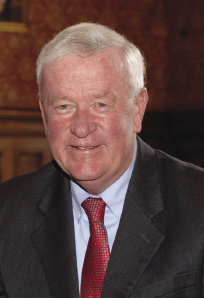Since 1846 the city of Cambridge has been administered under four distinct forms of government. When the original charter was accepted, it maintained some aspects of the former town government structure: a weak mayor presided over a board of alderman and a common council representing three wards.
Charter revisions adopted in 1891 increased the number of alderman and common councilors, but also strengthened the mayor's authority.
In 1916 Cambridge adopted a Plan B form of government which substituted a city council elected by the wards for the common council and board of alderman.
In 1940 the voters of Cambridge adopted the present Plan E, a strong city manager and a nine member city council from whose number the mayor is elected. This provides for a political entity, the Cambridge City Council, consisting of nine city councilors and a six member school committee.
The mayor, who is elected by the city council, becomes the 7th member of the school committee and serves as its chair. This body manages the political aspect of the city. That group also selects a city manager and other positions within the city government. While the city council and mayor focus on the policies and politics of the city, the city manager and his staff focus on sustaining financially sound practices in order for the city to grow into the future. The city manager plays the vital role managing all of the city's business affairs including administration and operation of the city. This system provides substantial support for the policy of checks and balances between politics and business, both essential and vital to the productivity and efficiency of a successful city. Cambridge is an extremely well managed and operated city. It ranks at the top level throughout the country. The health and stability of Cambridge is due to a "team concept" shared between the city council, the mayor, and the city managers office. Through their cooperation, Cambridge has maintained its reputation as one of the leading centers in the world for biotech and life-sciences, higher education, technology, and health care. To maintain that reputation, all three agree that communication is vital, amongst different city departments, leaders within all aspects of the community, and most important it's residents and businesses.
The councils job is to authorize public improvements and expenditures, adopt regulations and ordinances, levy taxes, control the property taxes of the city and be the political "face" of city when working with state and federal agencies raising money for the city. They also have the freedom to bring new, forward-thinking ideas in regards to the city and urge the managers staff to be progressive.
The financial stability of the city is highlighted by the AAA Bond Rating that the three major credit agencies, (Fitch, Standard & Poors, Moody's) have assigned the city's outstanding and current General Obligation (GO) Bonds. The monies from these GO Bonds are used to finance capital improvement projects throughout the city. The AAA rating that the city of Cambridge has achieved enables them to borrow money at the lowest rate possible, which in turn keeps taxes low for the businesses and residents, while greatly improving the infrastructure of the city.
Cambridge is proud to be one out of 19 cities in the United States to have a AAA rating. The businesses and residents of the city are the direct benefactors of this rating.
GO Bonds have been used to finance the $77 million Walter J. Sullivan Water Treatment Facility, the $90 million main library expansion, $125 million investment in sewer and storm water facilities, and a new $60 million, 100,000 s/f LEED certified police headquarters.
In 1982, the commonwealth of Massachusetts implemented Proposition 2 ½. Prop 2 ½ is a statewide tax limitation initiative petition limiting the property tax levy in cities and towns in the Commonwealth to 2.5% of the full and fair cash valuation of the taxable real and personal property in that city or town. The statute also places an annual growth cap of 2.5% on the increase in the property tax levy.
While most communities are at the levy limit, Cambridge is $92.7 million below levy limit, which is more than all the communities combined in the commonwealth. Why is this important? The main source of income to run city and town programs, services, and improvements, and are derived from taxable real estate and personal property.
When a city or town is limited on how much they can raise through real estate and personal property, there are things that are sometimes sacrificed such as public libraries and schools, and infrastructure such as roads, public buildings and parks.
Cambridge consistently stays under the limit due to the following: Significant growth in new residential and commercial construction, which is outside the Prop 2 ½ limits, controlled annual budget growth (including staffing) and conservative revenue projections, increasing non-property tax revenues such as hotel/motel tax and building permits, and the prudent use of reserves to lessen the growth in the property levy.
One of the city governments most progressive ideas was the renewal of the PILOT (Payment In-Leui of Taxes) program in 2005 with the local universities (Harvard and Mass. Institute of Technology) for their nontaxable property.
Universities, like churches, are exempt from paying taxes on their property. MIT and Harvard are the two largest property owners in the city. Contrary to uninformed sources and popular misconceptions, MIT and Harvard are respectfully the first and fifth largest taxpayers in the city. This unique program exemplifies that the city government can work closely with the education and business sector, which greatly lowers the taxes of the residents and other businesses.











.png)